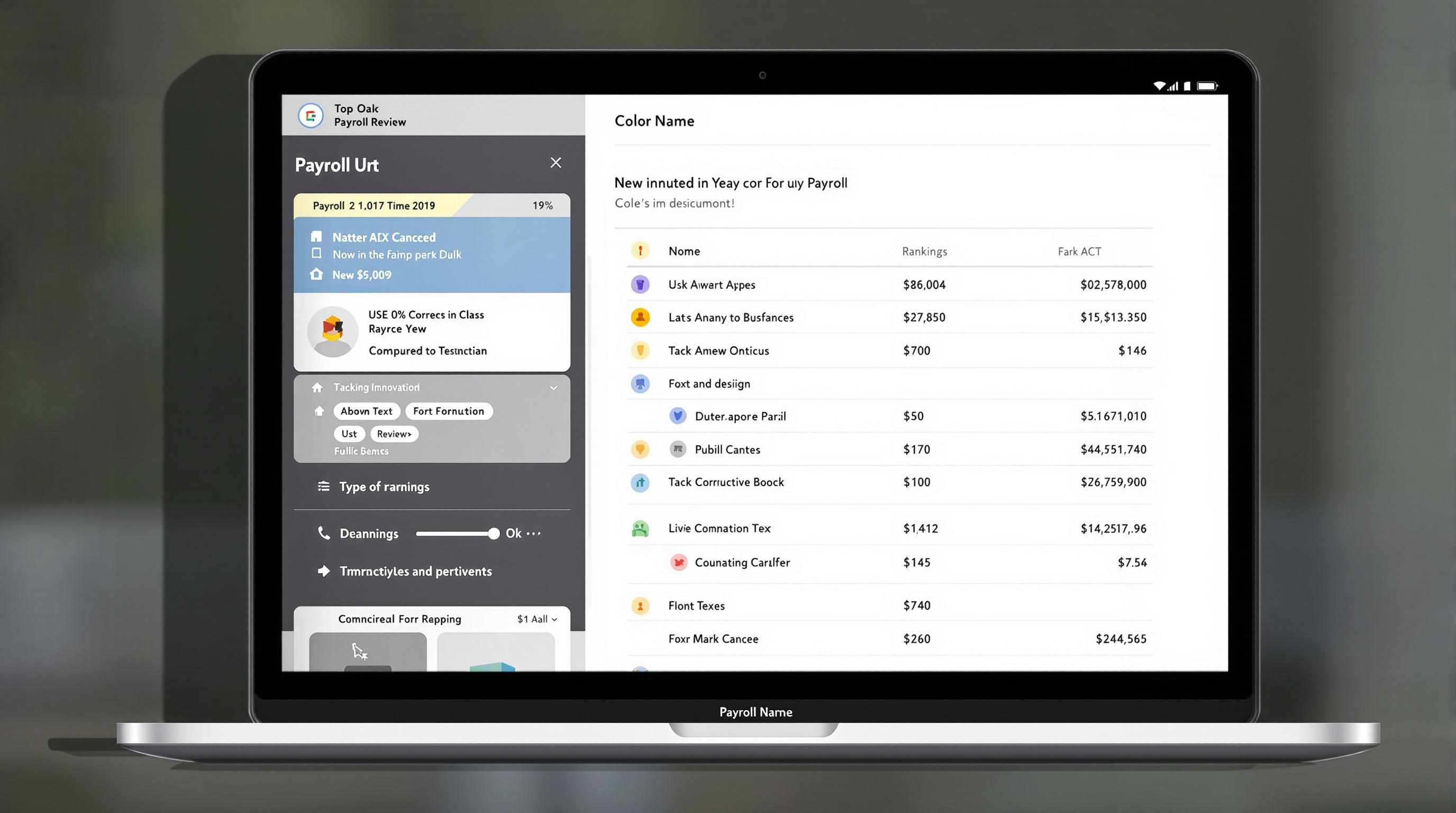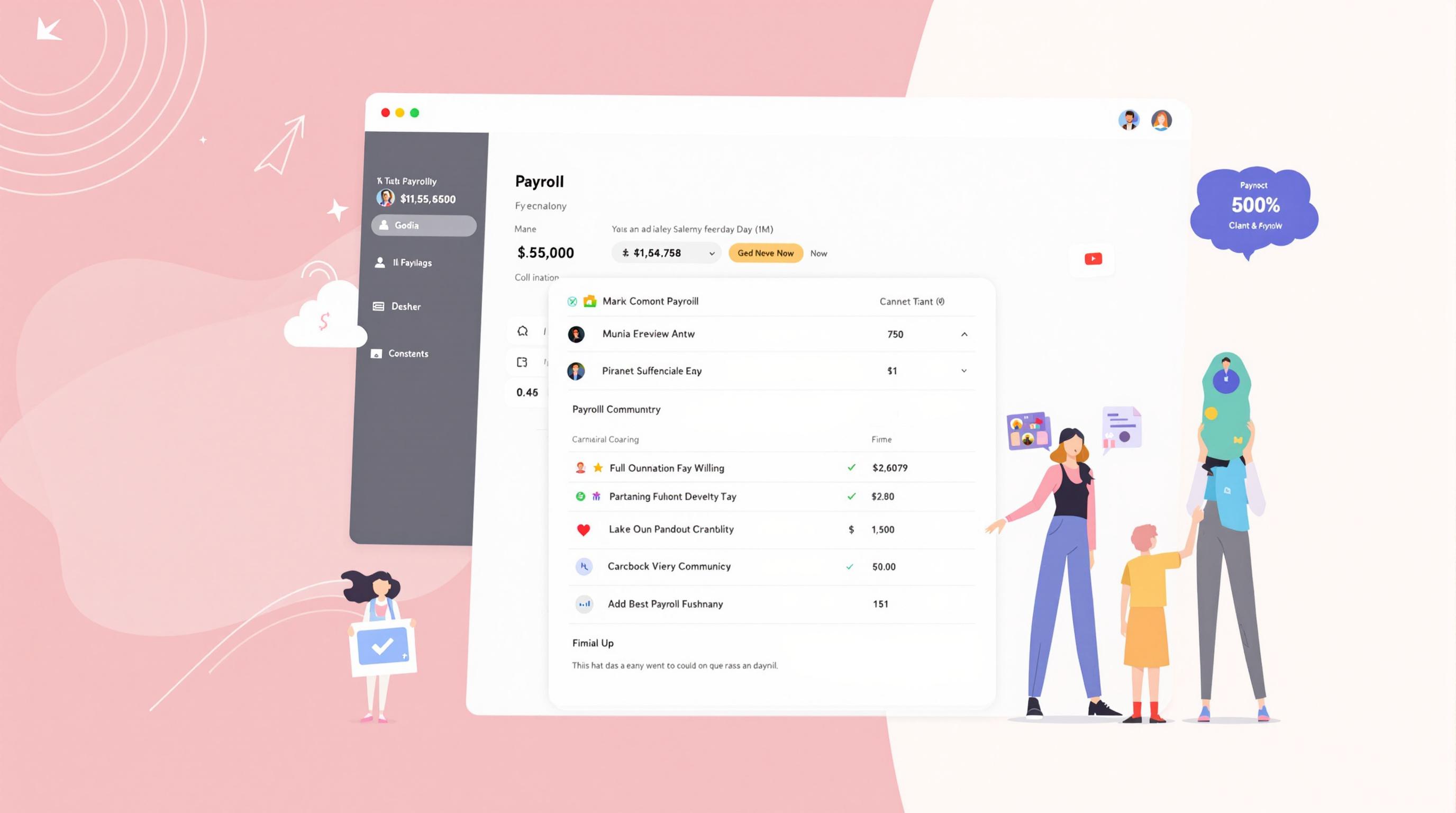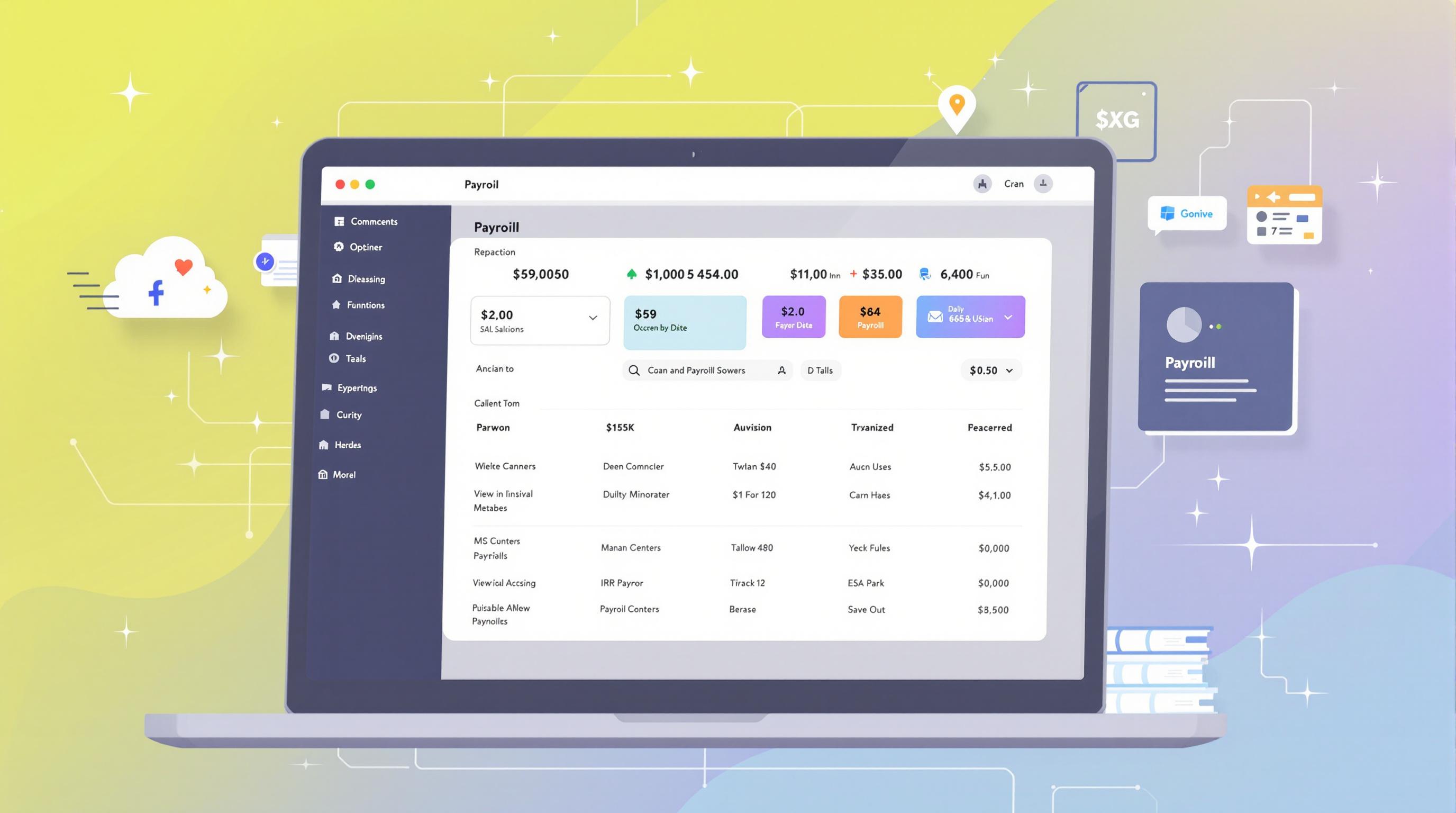Related Articles
- How Mobile Accounting Influences Entrepreneurial Mental Health and Work-Life Balance in Gig Economies
- The Quiet Costs: How Mismanaged Time Data Quietly Undermines Small Business Growth and Decision Making
- Top 5 Trailblazing AI-Powered Financial Reporting Apps Revolutionizing Accuracy and Speed Since 2019
- How Behavioral Economics Shapes Decision-Making in Financial Record Matching and Discrepancy Resolution
- How Subtle Shifts in Supplier Relationships Secretly Affect Your Company's Financial Health and Liquidity Balance
- Top 6 Payroll Solutions Born in the Last Five Years That Are Quietly Taking the Gig Economy by Storm
Top 8 Game-Changing Payroll Innovations Released Since 2019: In-Depth Reviews and Rankings
Top 8 Game-Changing Payroll Innovations Released Since 2019: In-Depth Reviews and Rankings
Top 8 Game-Changing Payroll Innovations Released Since 2019: In-Depth Reviews and Rankings
Payroll management has witnessed remarkable innovations over the past several years, transforming how organizations handle employee compensation, compliance, and reporting. Since 2019, numerous advancements have significantly improved accuracy, efficiency, and user experience in payroll systems. This article explores the top eight payroll innovations that have redefined the landscape, offering comprehensive reviews and rankings based on functionality, adoption, and impact.
Our selection criteria emphasize technological breakthroughs, integration capabilities, user feedback, and compliance enhancements. We specifically focus on tools and features introduced post-2019 to highlight recent transformative solutions. From AI-powered deductions to real-time tax processing, the following innovations represent milestones in payroll evolution.
Each section details a unique innovation, describing its core features, benefits, and real-world applications. Whether you are a small business owner, HR leader, or payroll professional, this guide aims to provide insightful information to help optimize your payroll operations with modern tools.
1. AI-Driven Payroll Automation
Artificial Intelligence (AI) has been a game changer in payroll automation since 2019. By leveraging machine learning algorithms, these systems automatically classify employees, calculate deductions, and flag discrepancies with minimal human intervention. This reduces errors and accelerates payroll processing cycles.
One exemplary platform utilizing AI is Gusto’s AI-enhanced payroll suite, which integrates seamlessly with existing HR systems, providing predictive analytics for cash flow and tax obligations. According to a 2022 Forbes report, AI-enabled payroll can reduce manual processing time by up to 40% (Forbes, 2022).
The benefits extend to compliance as well; AI algorithms update rules dynamically to accommodate changes in tax laws and labor regulations, ensuring organizations remain compliant without exhaustive manual checks. This innovation empowers payroll departments to focus on strategic initiatives rather than routine tasks.
2. Real-Time Payroll Tax Calculations
Real-time tax calculation tools have revolutionized payroll by providing instant and accurate tax withholdings during paycheck generation. Unlike traditional batch processing, these systems fetch updated tax tables and apply them immediately, reducing discrepancies and late filings.
For instance, Intuit QuickBooks introduced real-time tax updates in their payroll product in late 2019. This feature has been credited with decreasing tax-related penalties for businesses by ensuring up-to-date calculations. Real-time processing improves transparency for employees who can see exact deductions reflected instantly.
Moreover, this innovation supports multi-jurisdictional compliances, automatically adjusting withholdings based on evolving state and local tax codes. Such adaptability is critical for companies with geographically dispersed workforces, reducing manual tax adjustments across payroll cycles.
3. Blockchain-Based Payroll Systems
Blockchain technology has started influencing payroll by providing secure, transparent, and instantaneous payment methods. Since 2019, startups and established vendors have piloted blockchain payroll systems to minimize fraud and facilitate cross-border payments.
One notable example is Bitwage, which offers payroll processing and wage payments via cryptocurrencies using blockchain. This innovation promises faster settlements compared to traditional banking, especially benefiting freelancers and remote workers paid in multiple currencies.
Additionally, blockchain’s immutable ledger enhances auditability and reduces payroll disputes, fostering trust. However, widespread adoption remains limited due to regulatory uncertainty and technical challenges, though ongoing developments suggest growing momentum in coming years.
4. Employee Self-Service Portals with Integrated Chatbots
Enhanced employee self-service (ESS) portals paired with AI chatbots have modernized payroll accessibility since 2019. Employees can now query pay stubs, request corrections, and manage benefits through intuitive interfaces without involving HR staff.
ADP's integration of chatbot technology into its ESS platforms provides a 24/7 interactive experience, answering payroll-related questions instantly. User surveys report a 30% reduction in HR support tickets concerning pay inquiries (ADP User Report, 2021).
This innovation increases employee satisfaction by offering transparency and immediate support. From a business perspective, it streamlines payroll operations and reduces administrative overhead, allowing staff to prioritize complex tasks.
5. Automated Compliance Monitoring Tools
Compliance complexities have escalated with the proliferation of labor laws and tax regulations. Automated compliance monitoring tools introduced after 2019 help organizations continuously audit payroll activities and flag risks proactively.
Solutions like Paycom’s Compliance Assistant track regulatory updates and cross-reference payroll data for anomalies. This tool provides actionable alerts and recommendations to ensure ongoing adherence to federal, state, and local laws.
The importance of these innovations is reflected in reduced legal penalties and smoother audits. By automating compliance, companies can avoid costly errors and devote resources to strategic HR initiatives instead of manual rule checks.
6. Instant Wage Access and On-Demand Pay
On-demand pay platforms offering instant wage access have gained traction since 2019, enabling employees to withdraw earned wages before scheduled paydays. This innovation addresses financial wellness by improving cash flow for workers.
Providers such as Earnin and DailyPay integrate with payroll systems to allow real-time payout of accrued wages minus advances, often without hefty fees or interest. A 2023 study by the Financial Health Network showed that such services reduce payday loan dependency by 15% among users.
For employers, offering instant access enhances employee retention and satisfaction, positioning payroll as a tool for broader workforce engagement and support. This shift reflects a modernization of payroll aligned with contemporary financial needs.
7. Cloud-Based Payroll Platforms with Enhanced Security
The shift to cloud-based payroll platforms has accelerated significantly since 2019, incorporating advanced security protocols such as multi-factor authentication (MFA) and end-to-end encryption. This enhancement mitigates risks of data breaches and identity theft.
Platforms like Paylocity and Zenefits have invested heavily in security features tailored for sensitive payroll data. According to a 2021 IBM Security report, cloud payroll services with robust security reduce breach incidents by approximately 25% compared to on-premise solutions.
This innovation provides scalable and flexible solutions accessible from any device, supporting remote work trends while maintaining data integrity. Businesses benefit from lower IT overhead and automated updates that strengthen defenses against evolving cyber threats.
8. Advanced Analytics and Payroll Forecasting Tools
Cutting-edge analytics integrated into payroll systems allow companies to forecast labor costs, plan budgets, and analyze compensation trends with greater precision. These tools have been increasingly embedded since 2019 to facilitate data-driven decisions.
Workday’s Payroll Insights product exemplifies this category, enabling custom dashboards and predictive modeling that assess various payroll scenarios. A recent Deloitte report highlights that firms using payroll analytics improve budgeting accuracy by over 20% (Deloitte, 2023).
Additionally, analytics empower HR leaders to benchmark salaries, identify overtime trends, and optimize workforce allocation. These capabilities turn payroll data into strategic assets, supporting organizational growth and efficiency.
9. Integration of Payroll with Human Capital Management (HCM) Systems
Since 2019, seamless integration between payroll and broader Human Capital Management (HCM) systems has become vital. Unified platforms synchronize timekeeping, benefits, performance, and payroll data to ensure consistency and reduce administrative errors.
Oracle HCM Cloud and SAP SuccessFactors have enhanced their payroll modules to tightly integrate with talent management and employee engagement tools. This convergence enables real-time data flow, streamlining workflows across HR functions.
The result is a holistic employee lifecycle management experience that improves data accuracy and operational efficiency, allowing organizations to adapt swiftly to changing workforce dynamics.
10. Mobile Payroll Processing and Notifications
Mobile-enabled payroll solutions allow both administrators and employees to manage payroll tasks on smartphones and tablets, a critical convenience since the rise of remote work post-2019. These apps facilitate approvals, pay stub access, and notifications on the go.
Examples include Square Payroll’s mobile app, which features push notifications for payroll deadlines and direct deposit confirmations. A 2022 survey by TechTarget found that 65% of payroll professionals consider mobile capabilities essential for modern payroll systems.
Mobile processing enhances responsiveness and engagement by keeping stakeholders informed and able to act promptly regardless of location. This accessibility aligns payroll operations with today’s mobile-first workplace culture.
References:
ADP User Report, 2021. "Enhancing Employee Self-Service with AI Chatbots."
Deloitte, 2023. "The Future of Payroll: Analytics and Forecasting."
Forbes, 2022. "Artificial Intelligence Transforming Payroll Operations."
IBM Security, 2021. "Cloud Payroll Security Trends."
Financial Health Network, 2023. "Impact of On-Demand Wage Access Services."



